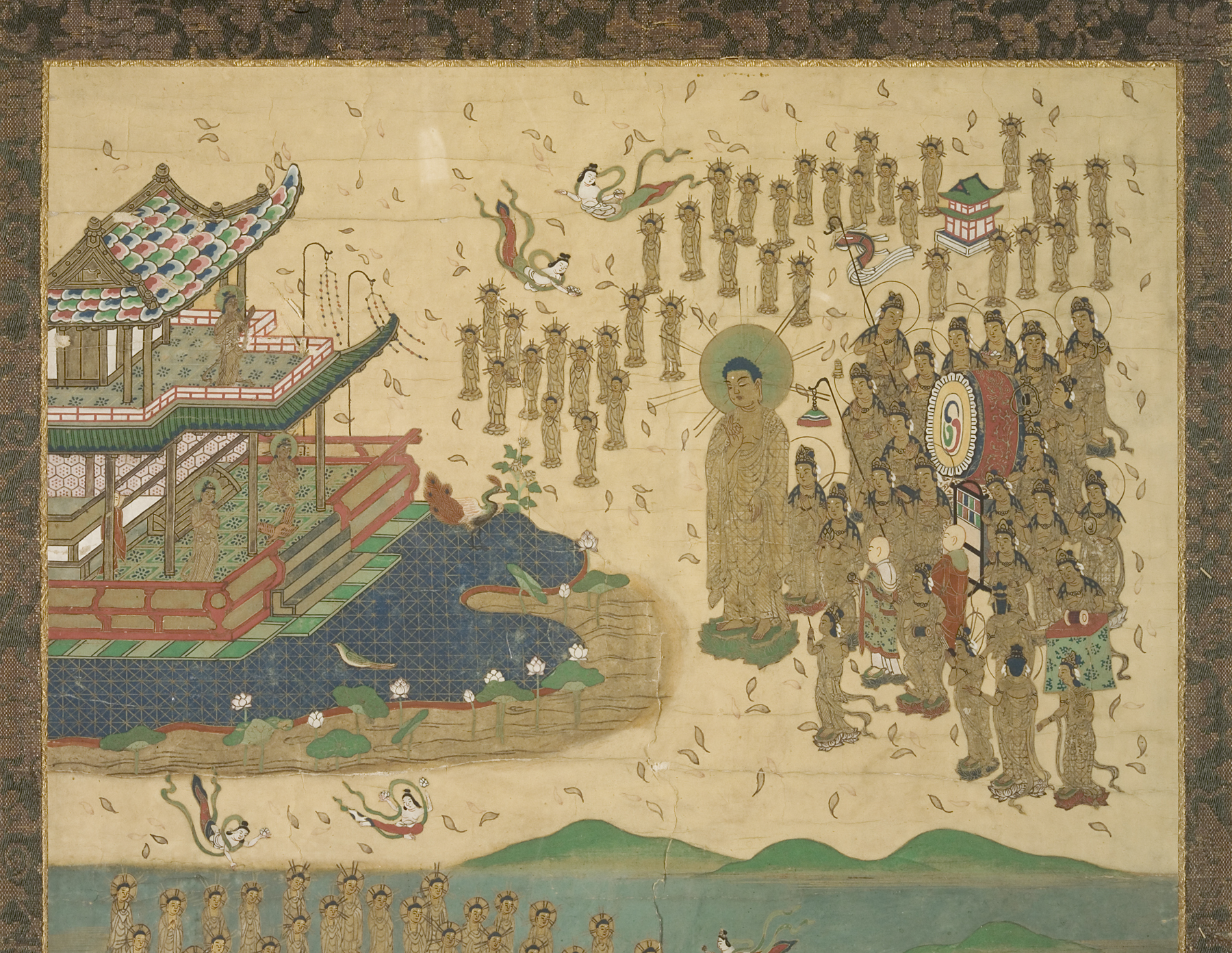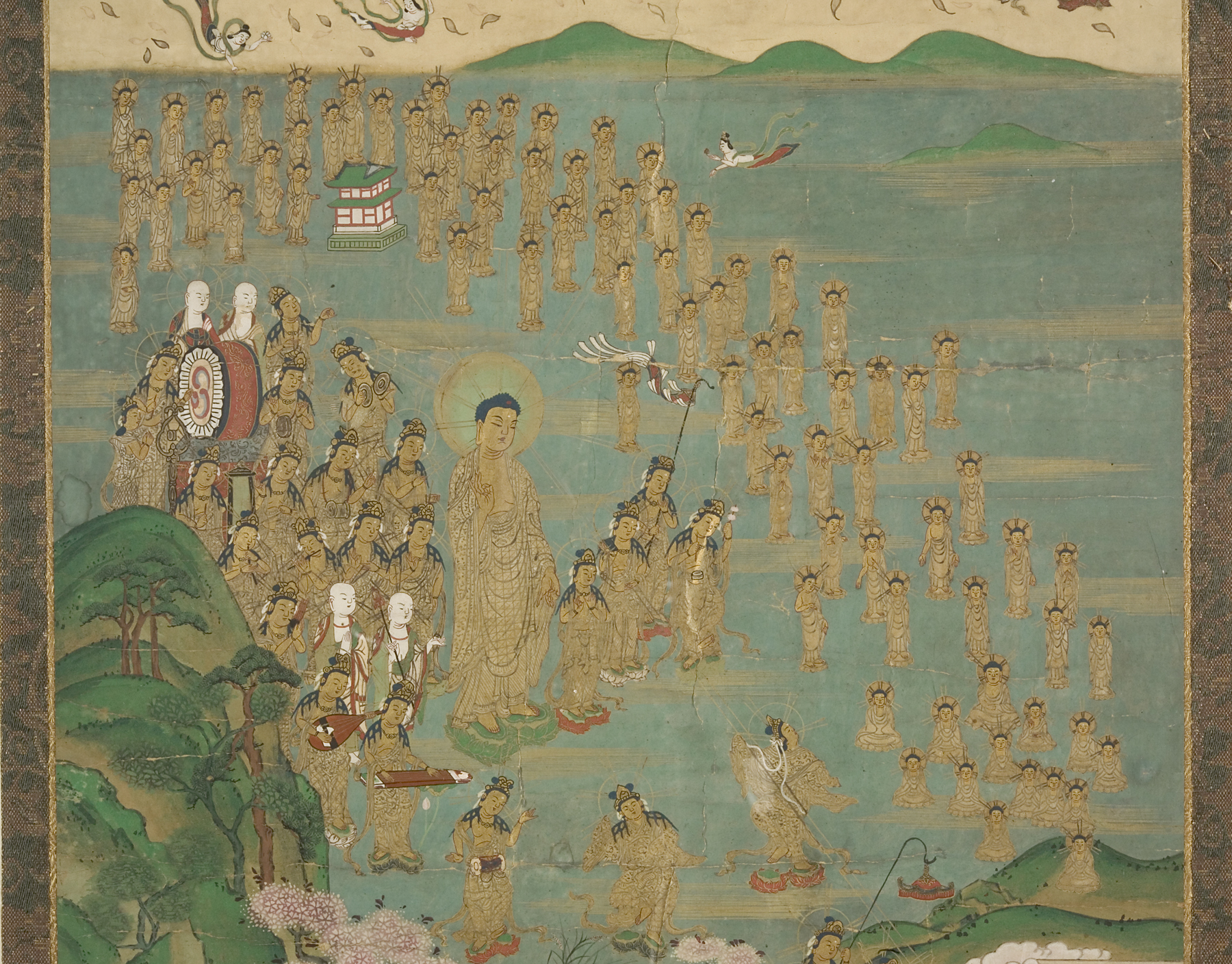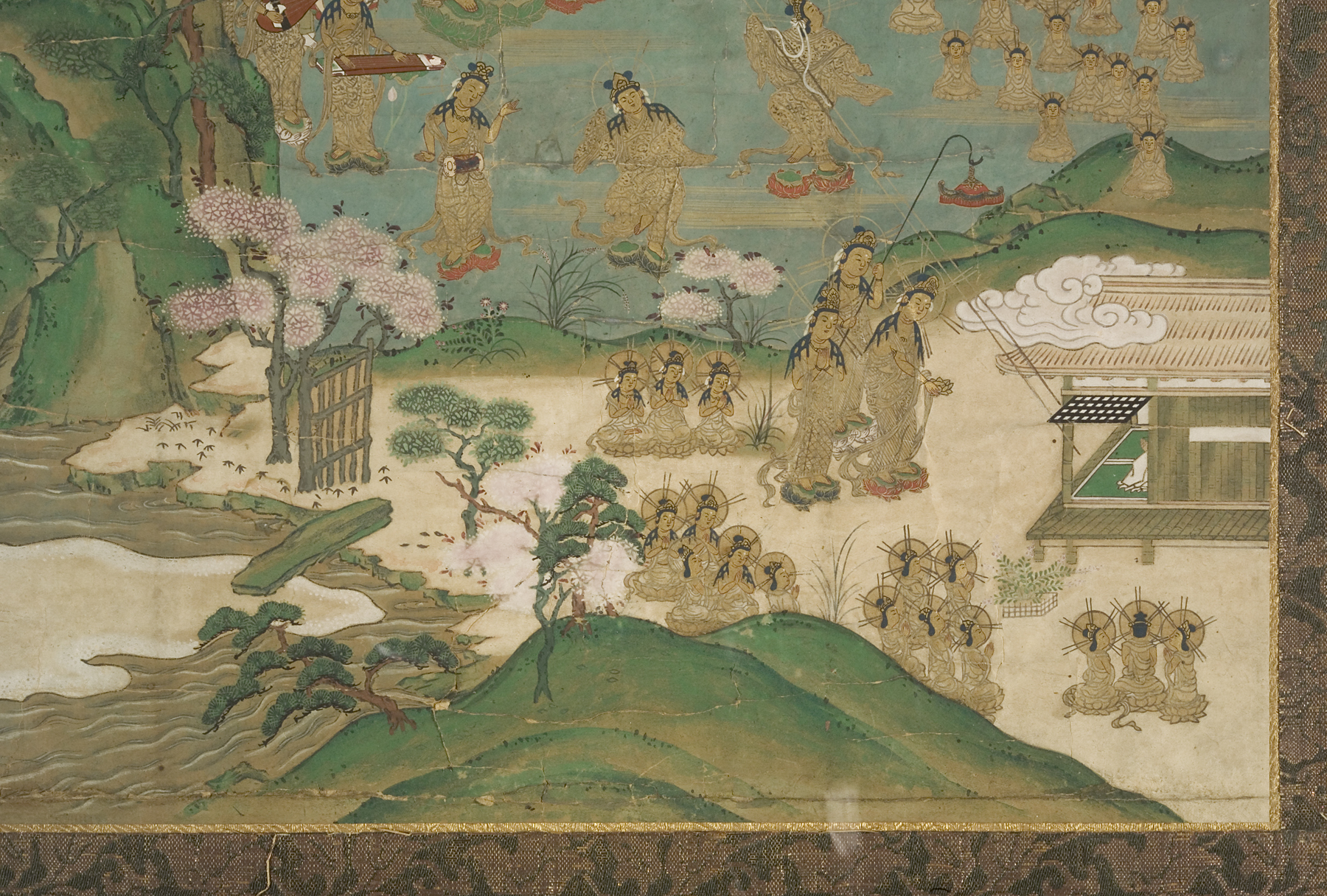Gōshō Mandara (Mandala of Amitābha’s Welcoming Descent), unknown maker from Japan
Artwork Overview
Gōshō Mandara (Mandala of Amitābha’s Welcoming Descent)
, possibly 1800s, Edo period (1600–1868)
Where object was made: Japan
Material/technique: color; gold; ink; paper
Dimensions:
Image Dimensions Height/Width (Height x Width): 55.9 x 29.2 cm
Image Dimensions Height/Width (Height x Width): 22 x 11 1/2 in
Object Height/Width (Height x Width): 559 x 292 mm
Object Height/Width (Height x Width): 22 x 11 1/2 in
Frame Dimensions (Height x Width x Depth): 35 x 17 1/2 in
Image Dimensions Height/Width (Height x Width): 55.9 x 29.2 cm
Image Dimensions Height/Width (Height x Width): 22 x 11 1/2 in
Object Height/Width (Height x Width): 559 x 292 mm
Object Height/Width (Height x Width): 22 x 11 1/2 in
Frame Dimensions (Height x Width x Depth): 35 x 17 1/2 in
Credit line: William Bridges Thayer Memorial
Accession number: 1928.7135
Not on display
If you wish to reproduce this image, please submit an image request




















